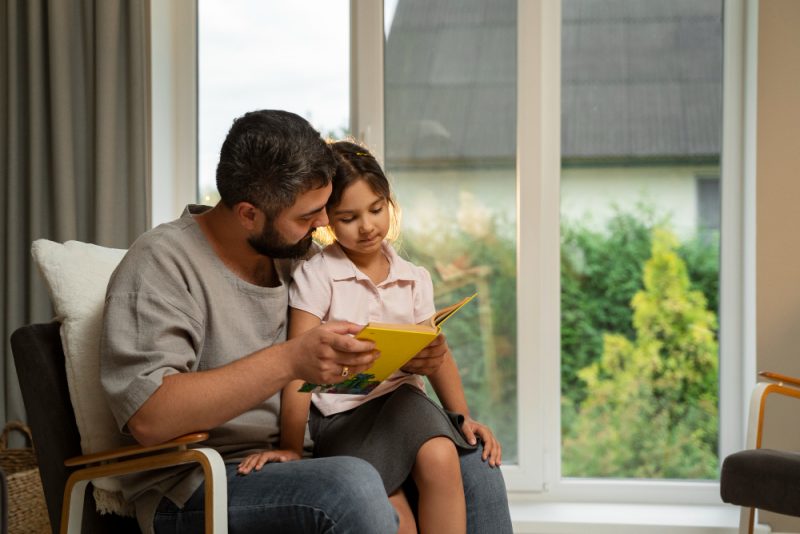
‘Living Room Kid’ vs. ‘Bedroom Kid’: The Difference & Parenting Tips

Parenting means learning the little clues that show how your child feels. One major clue? Where your kid spends most of their time. Some kids are loud, messy, and love the spotlight in shared spaces. Others are quiet, private, and keep to themselves in their rooms. These patterns tell you more than you think.
A living room kid is the one who spreads out on the couch, turns the living room into a fort, and yells across the house just to say hi. They live in the heart of the home and bring the energy with them. A bedroom kid, on the other hand, prefers quiet corners, shut doors, and solo time. Their room is their ‘home,’ and they are happy to keep it that way.
What Makes a ‘Living Room Kid’
Living room kids are usually raised in families that value openness. They feel safe being loud. They don’t mind a little mess, and they see common spaces as theirs too. These kids often talk freely and are comfortable asking questions or joining in adult conversations.

Mart / Pexels / Living room kids are extroverts. They love being around fellow kids and family members.
This kind of setup often reflects a parenting style that welcomes chaos. Not sloppy chaos, but the kind that shows connection. Toys in the hallway. Art projects on the kitchen table. A family that lives together in every sense.
Why Some Kids Retreat to Their Bedrooms
Not all kids are wired for noise. Some need quiet like others need oxygen. Parenting a bedroom kid means knowing that wanting space is not bad. It could mean your child is an introvert, or they just feel more in control when they are alone. For teens, this is extra common. Privacy becomes gold. It is part of growing up.
But pay attention to sudden changes. If your usually chatty child starts hiding away, something might be off. Stress at school, fights at home, or social anxiety can cause a kid to retreat.
Bedroom time is not a problem if your child is still happy and engaged when it matters. The red flag is withdrawal without reason.
Culture, Age & the House Rules
Not every family runs the same way. Culture plays a big role in shaping how kids use space. In some homes, shared space is life. In others, respect for personal space is key. Neither is wrong.

Freepik / Parenting styles shift based on traditions, habits, and even house design, and that shapes kids’ behavior.
Age also changes the situation. Little kids often want to be near their parents. As they get older, many naturally pull back. It is part of becoming independent. If toys are banned from the living room, kids will stay in their rooms.
Your Bedroom Kid Might be Lonely!
A kid who likes their room is not a problem. A kid who hides there out of fear or sadness is a different story. Parenting means knowing your child well enough to spot the difference. Look for mood swings, lack of interest in things they used to love, or irritability. These signs could point to something deeper.
That said, don’t panic over every closed door. Some kids just like the quiet. Give them space, but check in.
There is no cure-all way of parenting for these kids. Don’t treat living room kids as more open or bedroom kids as more distant. Both are normal. The real test of parenting is how you respond to who your child is, not who you wish they were.
As psychologist Dr. Thomas Priolo says, it is about “making sure kids feel safe no matter where they are.”
More in Family
-
`
5 Things Millionaires Are Doing With Their Money in 2025
Money doesn’t sit still when you are rich. Millionaires don’t hoard it, they grow it. Every dollar has a job to...
June 21, 2025 -
`
5 Ways Morning Meditation Can Boost Your Mental Health
Morning meditation is backed by science and proven to make your brain and body feel better. Right after you wake up,...
June 8, 2025 -
`
Top 10 Best-Dressed Celebs at the 2025 Cannes Film Festival
The 2025 Cannes Film Festival is turning up the glam, but not without surprises. Just a day before the premieres began,...
May 30, 2025 -
`
Warren Buffett Shares Key Investment Lessons at the 2025 Berkshire Shareholder Meeting
Warren Buffett walked into the 2025 Berkshire Hathaway Shareholder Meeting with the same calm he has carried through decades of market...
May 23, 2025 -
`
Are Trump’s Pronatalist Policies Good for Kids?
Kids are at the center of every debate about America’s future, and now they are at the heart of Trump’s newest...
May 15, 2025 -
`
Meditation Expert Shares 5 ‘Happy Hacks’ to Bring More Joy Into Your Day
Americans are more miserable than ever, and that is not just a feeling. Data backs it up. Even if you are...
May 9, 2025 -
`
A Peek Into the Chic Looks From Coachella 2025
Coachella 2025 just wrapped up. And if you were expecting flower crowns and fringe vests, think again. This year flipped the...
May 3, 2025 -
`
How to Combat the Current Stock Market Chaos
Market chaos can make even the calmest investor feel like jumping ship. Stocks fall, headlines scream, and suddenly everything feels urgent...
April 25, 2025 -
`
The Top 5 Benefits of Cooking With Kids Most Parents Don’t Know
Cooking with kids doesn’t just keep them busy. It is a game-changer with numerous benefits. The kitchen becomes a classroom, a...
April 18, 2025















You must be logged in to post a comment Login